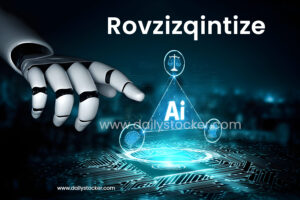Duaction: Dual-Action Learning Model Combining Theory and Practice for Skills and Success
Duaction is a revolutionary learning model derived from the words “dual” and “action.” It emphasizes the simultaneous development of theoretical knowledge and practical application, creating a unique learning experience that is both immersive and outcome-driven. Unlike traditional learning models that focus primarily on memorization or passive instruction, duaction encourages learners to actively engage with content, apply what they learn immediately, and reflect on their experiences for continuous improvement.
This dual-action approach is not limited to classrooms—it extends into corporate training, technology, healthcare, personal development, and even everyday life. By integrating theory with action, duaction equips individuals with real-world skill development, critical thinking capabilities, and adaptive intelligence needed to thrive in today’s fast-paced environment.
In this article, we will explore the core principles of duaction, its applications in education, business, technology, healthcare, and daily life, as well as its benefits, challenges, and the role it plays in shaping the future of learning and professional growth.
What is Duaction? Understanding the Dual-Action Learning Model
Duaction is a transformative learning framework designed to combine the best of theoretical and practical learning. The philosophy behind the model is simple yet powerful: learning and doing must occur simultaneously to create deep understanding, skill retention, and the ability to apply knowledge effectively.
This approach ensures that learners do not just memorize concepts—they actively apply them in real-world scenarios, develop critical thinking, and continuously refine their understanding. In essence, duaction turns knowledge into action, producing learners who are proactive, skilled, and ready to contribute meaningfully to society.
The Core Principles of Duaction
- Active Participation
Learners are encouraged to engage fully with content through hands-on projects, simulations, and collaborative tasks. This principle ensures that learning is not passive but interactive, promoting engagement, creativity, and teamwork. - Immediate Application
Knowledge becomes meaningful only when applied. Duaction emphasizes applying concepts immediately in practical scenarios, whether in classrooms, workplaces, or community projects. - Reflective Practice
After taking action, learners reflect on their experiences, analyze outcomes, and adjust their strategies. This feedback loop fosters continuous improvement, critical thinking, and self-awareness. - Continuous Learning
The cycle of learning, doing, and reflecting promotes adaptive learning. Learners develop resilience, creativity, and problem-solving skills that evolve with changing circumstances.
How Duaction Transforms Education
Education is one of the most prominent areas benefiting from duaction. Traditional teaching methods often focus on passive memorization, which can leave learners ill-prepared for real-world challenges. By integrating theory and practice, duaction in education promotes experiential learning that equips students with both knowledge and applicable skills.
Key Applications of Duaction in Education
- Project-Based Learning
Students engage in real projects that solve actual problems. For example, high school students may develop environmental awareness campaigns, while university students work on software solutions for local communities. - Internships and Co-op Programs
Duaction integrates academic theory with workplace experiences, allowing students to learn through hands-on participation. Internships become learning laboratories where knowledge meets real-world applications. - Bootcamps and Workshops
Intensive training programs in coding, design, and entrepreneurship adopt duaction principles by combining lectures with practice, simulations, and real-time feedback. - Collaborative Assignments
Working in teams helps students develop essential skills such as communication, empathy, and leadership, aligning perfectly with duaction’s focus on active engagement. - Reflective Exercises
Journaling, peer reviews, and group discussions encourage learners to assess their actions and improve continuously.
Benefits of Duaction in Learning
- Enhances knowledge retention through practical application.
- Develops critical thinking and problem-solving skills.
- Encourages multi-dimensional skill development, including soft skills like communication.
- Supports personalized learning based on individual interests and goals.
- Promotes a lifelong learning mindset that extends beyond formal education.
Duaction in Technology and Innovation
In technology, duaction provides a framework for innovation by combining creativity, data, and practical implementation. Companies and software developers use dual-action strategies to produce tools that are both functional and user-centric.
Practical Examples of Duaction in Technology
- AI Tools with Real-Time Output
Artificial intelligence programs learn from user interactions while generating immediate, actionable insights, reflecting duaction’s principle of combining theory with application. - Automation with Human Oversight
Software systems that automate repetitive tasks while allowing human decision-making are examples of dual-action strategies in tech. - Cloud-Based Platforms
Platforms that simultaneously store, analyze, and present data allow businesses to apply insights in real-time, embodying duaction in digital solutions. - Interactive Learning Tools
Virtual labs, gamified apps, and collaborative platforms enable students and professionals to practice while learning theory, reinforcing knowledge through action.
Benefits in Technology
- Accelerates innovation and creativity.
- Improves efficiency and productivity.
- Encourages adaptive learning and problem-solving in dynamic environments.
- Fosters multi-functional skills among users and professionals.
The Role of Duaction in Business Strategy
Businesses increasingly adopt duaction to merge analytical thinking with creativity, allowing organizations to innovate while remaining data-driven.
Applications in Business
- Digital Marketing Strategies
Combining storytelling with data analysis helps companies connect emotionally with customers while tracking performance metrics. - Corporate Training Programs
Employees engage in workshops, simulations, and real tasks, applying knowledge in practical ways to enhance productivity and skills. - Problem-Solving Frameworks
Teams tackle real challenges with a combination of theoretical understanding and hands-on experimentation. - Balanced Decision-Making
By integrating multiple approaches, businesses achieve sustainable problem-solving and long-term growth.
Benefits in Business
- Encourages innovation through integration.
- Develops multi-perspective business solutions.
- Enhances efficiency and productivity optimization.
- Prepares employees for career-ready skill acquisition.
Duaction in Healthcare: Combining Knowledge with Action
Healthcare is a sector where duaction demonstrates its transformative potential. Modern medical practices increasingly rely on dual-action learning models that integrate theoretical knowledge with practical application, ensuring both patients and practitioners benefit from more effective outcomes.
Key Applications of Duaction in Healthcare
- Preventive Care + Treatment
Traditional healthcare often emphasizes treatment after illness occurs. With duaction, practitioners focus on both curing and preventing diseases. For example, a nutritionist might combine diet plans (theory) with actionable lifestyle coaching (practice) to prevent chronic illnesses. - Diagnostics + Predictive AI
Artificial intelligence tools can analyze patient data while providing predictive insights, allowing doctors to make informed decisions. This dual approach embodies duaction by merging knowledge and immediate action to improve patient care. - Patient Engagement + Monitoring
Patients are encouraged to participate actively in their care routines. Tracking health metrics, attending interactive sessions, and practicing prescribed treatments all reflect duaction principles, leading to higher treatment adherence and better health outcomes. - Simulation Labs and Real-Time Case Reviews
Medical students and professionals gain hands-on experience through simulation labs while applying learned theory in controlled environments. Real-time case reviews help them reflect on their decisions and refine their clinical judgment.
Benefits of Duaction in Healthcare
- Improves patient outcomes through proactive interventions.
- Enhances practical skill development for healthcare professionals.
- Promotes critical thinking and decision-making under pressure.
- Encourages collaboration between practitioners, patients, and communities.
- Supports innovation in medical practices by integrating AI and hands-on learning.
Duaction in Daily Life: Bringing Dual-Action Learning to Personal Growth
The principles of duaction are not confined to professional or academic environments—they can be applied to everyday life for personal development, productivity, and multi-task efficiency.
Practical Examples of Duaction in Daily Life
- Learning While Exercising
Listening to podcasts or audiobooks while running or exercising allows individuals to combine physical activity with cognitive growth, reflecting the dual-action model. - Teaching While Doing
Parents can integrate lessons in mathematics or language skills while cooking with their children, ensuring learning is hands-on and interactive. - Work-Life Integration
Professionals can practice mindfulness or time management while performing routine tasks, promoting holistic self-improvement through duaction principles. - Hobby-Based Learning
Activities like gardening, painting, or music can become learning opportunities when combined with research, tutorials, or structured reflection.
Benefits of Daily Duaction
- Enhances efficiency by combining multiple actions in one session.
- Develops problem-solving and critical thinking through experiential engagement.
- Supports multi-dimensional personal growth, improving skills and knowledge simultaneously.
- Encourages habit formation and continuous learning, making self-improvement consistent and enjoyable.
Benefits of Duaction Across All Sectors
The widespread adoption of duaction yields significant advantages in education, business, healthcare, technology, and daily life. Some of the core benefits include:
- Enhanced Knowledge Retention
By applying theory immediately, learners reinforce their understanding and improve memory retention. - Real-World Skill Development
Duaction equips learners with actionable skills that translate to tangible results in careers and daily life. - Innovation and Creativity
The dual-action approach encourages thinking beyond conventional methods, sparking innovative solutions in business, tech, and healthcare. - Adaptability and Flexibility
Learners trained under duaction principles can quickly adjust to changing circumstances, enhancing resilience and problem-solving ability. - Holistic Personal Growth
Combining theory and action fosters cognitive, emotional, and social development simultaneously. - Improved Teamwork and Communication Skills
Collaborative tasks and projects enhance interpersonal skills and build the ability to work effectively in teams. - Empowered Decision-Making
Applying knowledge in real-time improves judgment, analytical thinking, and the ability to make informed decisions.
Challenges and Considerations in Implementing Duaction
While duaction offers many benefits, it also comes with challenges that need thoughtful solutions:
Common Challenges
- Complexity of Dual-Action Management
Managing two simultaneous actions can be overwhelming for learners without proper guidance. Structured planning and clear objectives are essential. - Resource Demands
Practical applications often require additional tools, technology, or mentorship, which may be costly or resource-intensive. - Balancing Quality Across Actions
Focusing on one action may compromise the other if not managed correctly. Integrating feedback loops and reflection helps maintain balance. - Resistance to Traditional Methods
Educators or organizations accustomed to conventional methods may be hesitant to adopt duaction, requiring awareness and gradual implementation. - Assessment Challenges
Measuring success in dual-action learning can be complex. Metrics must reflect both knowledge acquisition and practical application to ensure accurate evaluation.
Solutions and Best Practices
- Start small: Begin with pilot projects or workshops before scaling.
- Provide mentorship and guidance: Experienced facilitators help learners navigate dual-action learning.
- Use technology: Tools like LMS, VR/AR simulations, and gamified platforms enhance engagement.
- Promote reflective practice: Encourage journaling, peer feedback, and discussion sessions.
Case Studies and Success Stories of Duaction
Duaction is a practical learning approach that combines knowledge with real-world action. Across education, corporate settings, and communities, it has been successfully applied to create meaningful results and skill development. Here are some notable examples:
Education Success
A group of university students applied duaction by designing a sustainable energy project for their campus. They combined theoretical knowledge of renewable energy with hands-on installation and monitoring. As a result, the campus saw measurable energy savings, and students enhanced their skills in teamwork, problem-solving, and project management.
Corporate Success
A tech company used duaction in employee training by pairing coding theory with real-time problem-solving challenges. Employees improved their coding skills, developed innovative solutions, and increased productivity. The approach also boosted engagement, as team members actively applied what they learned in practical projects.
Community Impact
Local communities implemented duaction-inspired programs for recycling and environmental awareness. Residents learned eco-friendly practices and immediately applied them by organizing clean-up drives and recycling campaigns. These efforts reduced neighborhood waste by 40% and empowered participants with leadership and teamwork skills.
The Future of Duaction
The demand for duaction is growing across industries as organizations and individuals recognize the importance of integrating theory and practice.
Emerging Trends
- Integration in Education
Schools and universities increasingly adopt project-based learning, internships, and collaborative workshops, emphasizing dual-action principles. - Corporate Adoption
Companies are blending human creativity with data analytics, simulations, and real-world applications to enhance innovation and productivity. - Technology Innovations
AI, cloud platforms, and interactive tools now support duaction-based learning, allowing users to learn by doing at scale. - Healthcare Expansion
Preventive care, predictive AI, and simulation labs make healthcare more efficient, patient-centered, and outcomes-driven. - Everyday Life Implementation
Time management, productivity tools, and multi-task learning routines reflect the growing adoption of duaction in personal development.
Long-Term Impact
- Societal Change: Communities benefit from educated, proactive individuals applying knowledge practically.
- Sustainable Growth: Organizations using duaction develop adaptable, innovative teams.
- Global Problem-Solving: By combining knowledge with action, learners can tackle urgent issues like climate change, poverty, and health crises.
Final Words
Duaction represents a revolutionary approach to learning and skill development by combining theory with practical action. Unlike traditional methods that focus on memorization or passive instruction, duaction encourages active participation, immediate application, and reflective practice, producing learners who are adaptive, skilled, and proactive.
Across education, corporate training, healthcare, technology, and personal development, duaction has proven its value. Students applying dual-action principles gain real-world skills and enhanced problem-solving abilities. Professionals and employees become more innovative and productive, while communities benefit from actionable learning that drives societal improvement. Even in daily life, integrating duaction fosters personal growth, efficiency, and continuous self-improvement.
The future of learning and professional growth is increasingly shaped by the principles of duaction. As organizations, educators, and individuals continue to embrace this dual-action model, we can expect a world where knowledge is not only acquired but also applied, creating meaningful, lasting impact. In essence, duaction empowers people to bridge the gap between knowing and doing, transforming potential into measurable results and preparing learners for the dynamic challenges of tomorrow.
Stay ahead by staying connected with us for alerts and updates. Daily Stocker!
Share this content:








Post Comment